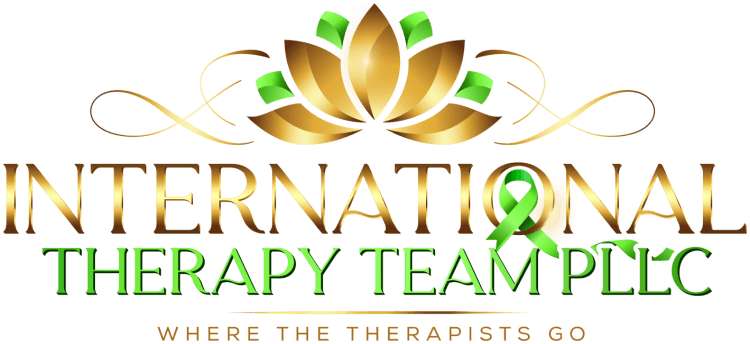In today’s fast-paced world, effective communication is crucial, especially in building and nurturing relationships. Communication skills in mental health play a vital role, enabling us to express ourselves clearly and empathetically. Whether it’s with family, friends, or colleagues, understanding these skills can make all the difference in fostering healthier connections.
1. The Art of Active Listening
Active listening is more than just hearing words; it’s about understanding the message. By fully focusing on the speaker, asking questions, and offering feedback, we show that we value their perspective. This skill not only strengthens bonds but also reduces misunderstandings.
Often, in our hurried lives, we tend to overlook the importance of truly listening to others. Active listening involves not only being attentive to the conversation but also observing nonverbal cues which often reveal more than words themselves. By asking open-ended questions and echoing back what’s been said, you create a two-way communication flow that shows genuine interest. This breaks down barriers and builds a foundation of trust. Making a conscientious effort to focus fully on whoever is speaking can significantly enhance the quality of personal and professional relationships.
2. Practicing Empathy in Conversations
Empathy involves putting yourself in someone else’s shoes. By acknowledging their feelings and showing compassion, you create a safe space for open communication. Empathy strengthens emotional connections and builds trust, essential components of any relationship.
An empathetic approach in communication allows others to feel seen and understood. This, in turn, encourages them to open up and share more freely. By consistently practicing empathy, we not only learn more about others but also about ourselves and how we respond in emotionally charged situations. Emotional validation and the acknowledgment of another’s feelings can act as powerful tools that align your expectations with others’. Embracing empathy in daily interactions fosters an environment where mutual respect and understanding thrive, leading to healthier and more supportive relationships.
3. The Importance of Nonverbal Communication
Nonverbal cues like facial expressions, body language, and eye contact give depth to our interactions. Being aware of these cues and using them effectively can enhance understanding and convey authenticity, reinforcing the spoken word.
While words convey facts, nonverbal communication often speaks to emotions and the real intent behind a message. Subtle signals such as a nod, smile, or a simple gesture can convey warmth, acceptance, and reassurance. By observing these signals, we can gain insights into how others are feeling and adjust our conversation style accordingly. Moreover, being mindful of our own body language can prevent sending unintended signals that might be perceived negatively. Mastering this form of communication can lead to more authentic connections, making those around us feel valued and heard.
4. Using ‘I’ Statements for Clarity
‘I’ statements focus on expressing your feelings rather than blaming others. This technique encourages more constructive dialogue and reduces defensiveness, paving the way for more open and honest discussions.
Emphasizing personal feelings through ‘I’ statements enables one to take accountability for their own emotions without shifting blame. For instance, saying, ‘I feel upset when plans are changed without notice,’ helps express personal feelings, rather than stating, ‘You always change plans.’ This subtle shift not only prevents the conversation from becoming confrontational but also helps the other party understand the personal impact of their actions. By fostering an atmosphere where individuals feel safe to express themselves, ‘I’ statements serve as a powerful tool in maintaining transparency and honesty in dialogues.
5. Developing Assertiveness
Being assertive means expressing your thoughts and needs confidently without being aggressive. It helps in setting boundaries and ensuring your voice is heard, contributing to more balanced and respectful interactions.
Assertiveness is a critical skill in achieving mutual respect in relationships. It allows for open communication where everyone’s needs are considered without resorting to passive or aggressive behavior. Assertiveness is about standing up for yourself while respecting others, creating a healthy dynamic that is free of resentment or power struggles. By practicing assertive communication, whether in personal or professional settings, one creates a balanced environment where ideas can be freely exchanged. It lays the foundation for cooperative problem-solving and promotes open dialogue, ultimately leading to harmonious and respectful connections.
6. The Power of Silence
Silence can be a powerful tool in communication, offering time to process information and reflect on responses. It shows patience and allows for more thoughtful exchanges, reducing the urge to react impulsively.
7. Offering Constructive Feedback
Feedback, when given constructively, can be a gift. It should focus on behavior, be specific, and aim for mutual understanding. Effective feedback supports growth and encourages positive change.
Delivering constructive feedback requires sensitivity and tact. It often helps to begin by acknowledging the positive aspects before discussing areas for improvement. Framing feedback in a supportive manner encourages the recipient to see it as a call for improvement rather than criticism. This fosters an atmosphere of trust and cooperation, where individuals are motivated to seek feedback. When done well, constructive feedback acts as a building block for development, both personally and professionally, aiming to foster an individual’s potential in a nurturing way.
8. Building Trust Through Consistency
Consistency in words and actions builds trust and reliability. By being true to your word and following through on commitments, you form a dependable communication style that others will respect and rely on.
9. Harnessing the Impact of Positive Reinforcement
Positive reinforcement in communication can motivate and encourage others. Acknowledging achievements and offering praise when appropriate can foster a culture of affirmation and boost morale.
Recognizing and rewarding improvements or achievements promotes a positive cycle of reinforcement in communication. A well-timed word of praise or acknowledgment makes others feel valued and confident in their contributions. Such reinforcement not only elevates spirits but can enhance performance and create a positive feedback loop where individuals are inspired to maintain or improve their efforts. Effective use of positive reinforcement lays down the psychological groundwork for a nurturing environment where motivation flourishes, and relationships grow stronger.
10. Managing Emotional Triggers
Understanding and managing your emotional triggers can prevent escalation during conversations. By recognizing what sets you off, you can remain calm and approach discussions more rationally, fostering a healthier dialogue.
Everyone has emotional triggers, which, if left unchecked, can derail conversations. Identifying these triggers allows you to anticipate emotional responses and manage them effectively. This control not only preserves the quality of communication but prevents damaging exchanges that can harm relationships. It is essential to practice self-awareness and emotional regulation techniques that help in keeping discussions productive and ensuring that emotions are channeled constructively. Mindfulness and reflection on triggers play an important role in improving responses and maintaining positive interactions in the long run.





